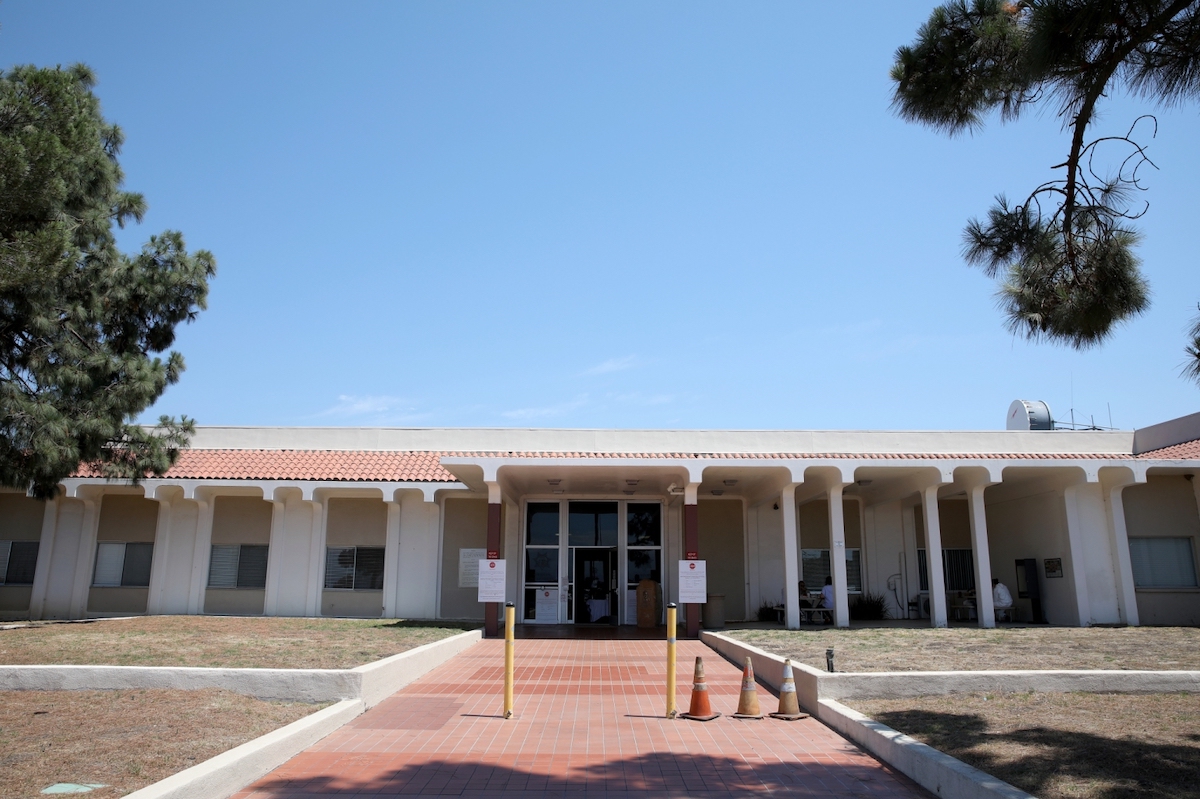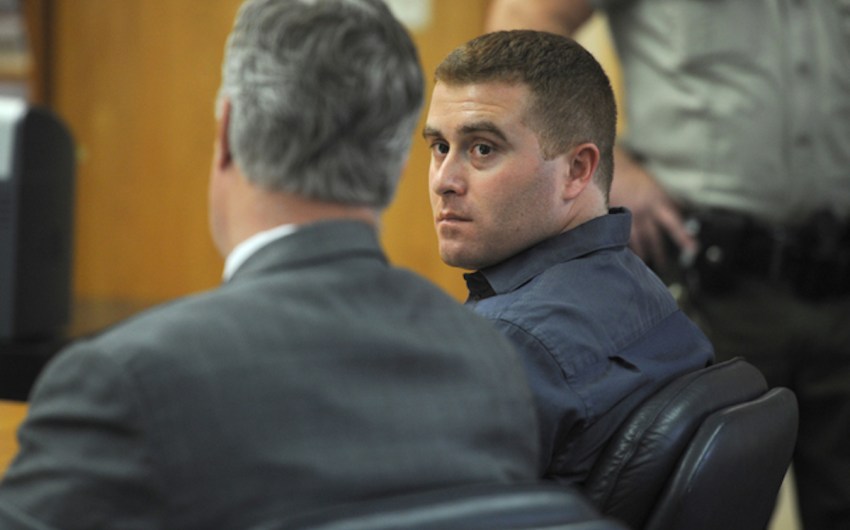Last Leap and Testament of Scott Powers: ‘A Nice Man Who Just Needed Help’
Powers’s Death Is One of Six Fatalities in County Jail Reviewed by Grand Jury

When Scott Powers threw himself over a second-story railing in the Santa Barbara County Jail on the morning of New Year’s Eve last year, he didn’t just fall through the cracks; he deliberately hurled himself through them. Head first.
A 61-year-old man with a long history of drug addiction and minor scrapes with the law, Powers had told everyone within earshot he intended to kill himself. On December 28, he’d told homeless outreach workers stationed at St. Athanasius Church in Goleta he was in physical pain and distraught about his lack of housing. When he was told there were no spaces available, though he could be put on a waiting list, he said he would jump in front of a train or off a bridge, but he could not endure another night.
The outreach workers, obligated to notify law enforcement, hoped a co-response team might respond. Instead, three Sheriff’s deputies rolled up in three cars and took Powers away. On his way out, Powers assured the outreach workers he “was a nice man who just needed help.”
Powers, it turned out, had a warrant out for failure to appear in court for relatively minor property crimes and was taken into custody without incident and held on $40,000 bail.
Once booked into the South County jail, according to a recently released Santa Barbara County Grand Jury report, many of the basic safety measures, designed to keep suicidal inmates safe, failed to kick in.
Powers was placed in a special padded cell, which lacks a mattress and has a hole in the floor for a toilet. There he stayed for 21 hours, where he was visually monitored at 15-minute intervals. After 12 hours, policy requires that he be evaluated by the CARES mobile crisis team. That never happened. Powers was visited multiple times for administration of medications and vital sign checks.
The next morning, Powers was released from his special safety cell. A mental health worker who spoke to Powers through a slot in the door reported he appeared anxious and disheveled. He was vehement that he no longer intended to do himself in. Instead, Powers reportedly complained about the lack of a mattress, a blanket, or a sweatshirt. Anyone so concerned about lack of comfort, the thinking was, “was unlikely to harm themselves.”
Accordingly, Powers was reclassified for regular housing and transferred to the Inmate Reception Center (IRC). The grand jury report found no plan for transferring Powers from a special safety cell where he could be observed 24/7 into the main population, a standard procedure. Powers’s new accommodation, it added, was “located on a second-story tier.” And he was housed alone.
On December 31, at 8:10 a.m., Scott Powers jumped off that second tier. He had been alone in the dayroom at the time.
It would take one minute and five seconds before an inmate noticed. He tried to notify custody staff via the intercom system, but the system was down for repairs. Also, the surveillance system — which transmits video feeds to custodial deputies — was not working, so no deputy was in the control room. It took inmates banging and shouting to bring custody staff, a full three minutes and 20 seconds after Powers hit the ground. At the time, the Grand Jury observed, the main jail should have been staffed by 19 custody officers. That day, because of ongoing and chronic staffing shortages, there were 11.
Powers was transported to Cottage Hospital, but a Do Not Resuscitate order had been signed by his family. At 3:16 p.m., he was pronounced dead.
Scott Powers’s death was one of six fatalities in the county jail reviewed by the Grand Jury. Two were suicide, two were overdoses, and two took place after force was administered to resistant inmates suffering from preexisting health issues.
The Grand Jury recommended that the Sheriff department revise its protocols to ensure that a timely mental health evaluation is conducted and that that the collaborative safety plan — already mandated — takes place before an inmate is released from the observational safety.
The Sheriff has 60 days to respond to Grand Jury reports.
Clarification: St. Athanasius Church is no longer located in Isla Vista and hasn’t been for 10 years when the church relocated to Sumida Gardens Lane in Goleta. To clarify further, Scott Powers spoke with two homeless outreach workers working in association with Showers of Blessing, which provides mobile shower services to homeless people from the church parking lot once a week. He did not speak with anyone directly involved with the church.
Premier Events
Sun, Dec 22
11:00 AM
Santa Barbara
Mosaic Makers Market – Holiday Market Finale
Wed, Dec 25
6:00 PM
Santa Barbara
FREE Contra Dance X-mas Day💃Corwin & Grace band6-9
Sun, Dec 22
11:00 AM
Santa Barbara
Mosaic Makers Market – Holiday Market Finale
Sun, Dec 22
2:00 PM
Santa Barbara
Santa Paws Holiday Party – A Howliday Celebration
Tue, Dec 24
2:00 PM
Santa Barbara
Brass Bear Christmas Eve Buffet
Tue, Dec 24
5:00 PM
Santa Barbara
Christmas Eve at the USSB
Wed, Dec 25
5:30 PM
Santa Barbara
Christmas Dinner at El Encanto
Fri, Dec 27
6:00 PM
Solvang
New Year Disco Ball Paint & Sip
Fri, Dec 27
9:00 PM
Santa Barbara
Film Screening: “Indiana Jones and The Last Crusade”
Sat, Dec 28
7:00 PM
Lompoc
Rosie Flores & Grey DeLisle + Special Guests LIVE
Sat, Dec 28
7:00 PM
Carpinteria
Family Comedy Night at The Alcazar
Sat, Dec 28
7:00 PM
Santa Barbara
The Temptations at Casa De La Raza
Sun, Dec 22 11:00 AM
Santa Barbara
Mosaic Makers Market – Holiday Market Finale
Wed, Dec 25 6:00 PM
Santa Barbara
FREE Contra Dance X-mas Day💃Corwin & Grace band6-9
Sun, Dec 22 11:00 AM
Santa Barbara
Mosaic Makers Market – Holiday Market Finale
Sun, Dec 22 2:00 PM
Santa Barbara
Santa Paws Holiday Party – A Howliday Celebration
Tue, Dec 24 2:00 PM
Santa Barbara
Brass Bear Christmas Eve Buffet
Tue, Dec 24 5:00 PM
Santa Barbara
Christmas Eve at the USSB
Wed, Dec 25 5:30 PM
Santa Barbara
Christmas Dinner at El Encanto
Fri, Dec 27 6:00 PM
Solvang
New Year Disco Ball Paint & Sip
Fri, Dec 27 9:00 PM
Santa Barbara
Film Screening: “Indiana Jones and The Last Crusade”
Sat, Dec 28 7:00 PM
Lompoc
Rosie Flores & Grey DeLisle + Special Guests LIVE
Sat, Dec 28 7:00 PM
Carpinteria
Family Comedy Night at The Alcazar
Sat, Dec 28 7:00 PM
Santa Barbara
























